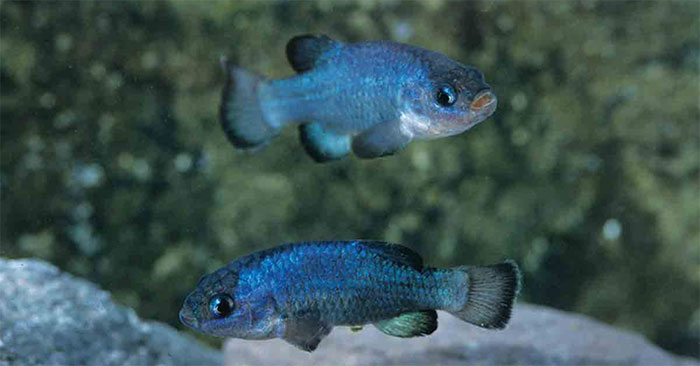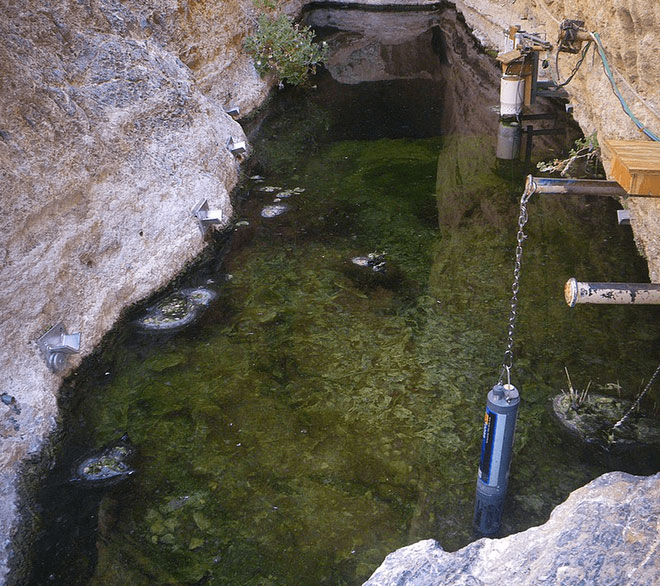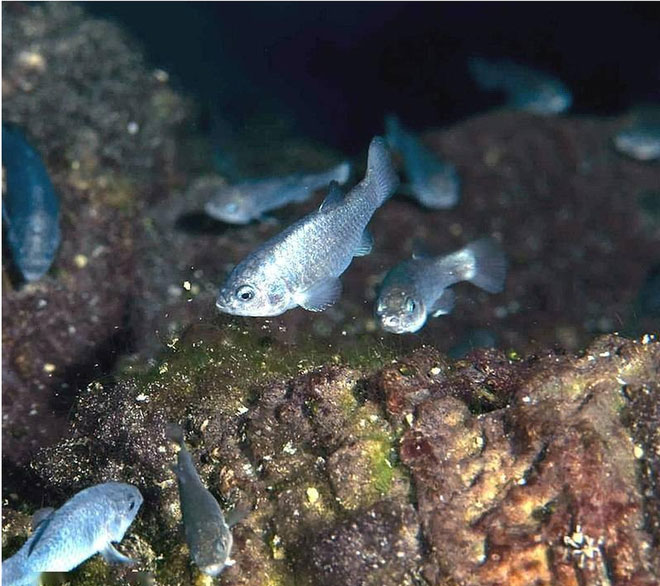The rare fish species only had 37 left, living in Devil's Hole
This fish species is considered to have fewer numbers than pandas with only 38 fish remaining in April 2016. after three tourists damaged their habitat.

Devil's hole pupa lives in "Devil's Cave", a limestone water cave with a stable temperature at a depth of more than 130m, in an isolated area of Death Valley National Park located between the states of California and Nevada in the US. .
This fish has lived since the Ice Age and was only discovered in 1930 by an American ichthyologist named Joseph H. Wales.
Devil's hole pupa lives at a depth of 24m. Scientists believe that this fish has been living in holes since about 60,000 years ago.

Conservation of this fish has become so important, millions of dollars have been spent. And finally, scientists' efforts have brought positive results. By April 2022, the number of devil hole fish pupae at Devil's Cave has increased to 175 fish.
Devil's hole pupa fish are quite small in size with a maximum length of 30mm. Depending on age and gender, they have different colors. Males are bright blue and females are bright yellow. The edges of all the fins of the devil hole pupfish are black, the back and eyeballs (operculum) are metallic yellow. Their irises are blue and also have a metallic sheen.
This fish does not have pelvic fins. Its dorsal fin has twelve rays, and each pectoral fin has seventeen rays.

The caudal fin is convex and has twenty-eight rays, curving outward at the edge. The number of scales from the posterior end of the crest to the tip of the tail is 27, with a serrated, or toothed, appearance on the outer edge.
The food of the devil pupa fish is beetles, snails, algae and freshwater crustaceans.
Devil fish pupae breed all year round, usually in spring and fall.
Females have very low fertility, laying only a single egg per spawning session. Eggs also have a very low survival rate.
Devil fish pupae can live for 10 - 14 months. The devil fish pupa, its eggs and young are a favorite food of the predatory diving beetle Neoclypeodytes cinctellus.
You should read it
- Minecraft: Top 3 most rare and difficult fish to find
- Good fish oil, Uses and How to drink
- Sharks plunge into gobbling up giant fish thousands
- Marvel at bizarre fish in the ocean
- Simple tips make it easy to identify fresh, delicious fish
- 10 species of land predatory fish in the natural world
- Scary aquatic monsters specialize in 'drilling' shark meat from within
- Strangely, fish can live on land for five years without dying
May be interested
- The Best Protein-Rich Fish to Eat According to Nutritionists
 not only is fish delicious, it also provides a vital nutrient your body needs — protein. here are some of the healthiest fish high in protein that experts recommend.
not only is fish delicious, it also provides a vital nutrient your body needs — protein. here are some of the healthiest fish high in protein that experts recommend. - Like humans, fish also have arthritis?
 researchers from the university of southern california, usa have announced that fish are very susceptible to arthritis, not just humans. this new argument contradicts previous thoughts about fish in our minds.
researchers from the university of southern california, usa have announced that fish are very susceptible to arthritis, not just humans. this new argument contradicts previous thoughts about fish in our minds. - India first discovered fossils of fish lizards
 for the first time, scientists said, the skeleton of ichthyosaur fossil - a species of marine reptile living with dinosaurs was discovered in india.
for the first time, scientists said, the skeleton of ichthyosaur fossil - a species of marine reptile living with dinosaurs was discovered in india. - The Piranhas are not as aggressive as we thought they were, making them the 'most terrifying planet on the planet'.
 piranha, the notorious fish in the amazon river (brazil) is known for its sharp teeth, extremely thirsty and crowded.
piranha, the notorious fish in the amazon river (brazil) is known for its sharp teeth, extremely thirsty and crowded. - The most dangerous fish in the world, with the largest venom gland of any other fish
 the devil-faced fish possesses 13 poisonous spines hidden along its dorsal fin and is recognized by the guinness world records as having the largest venom gland compared to any other fish species.
the devil-faced fish possesses 13 poisonous spines hidden along its dorsal fin and is recognized by the guinness world records as having the largest venom gland compared to any other fish species. - The most special fish on the planet has pale green flesh like in fiction films
 particularly rare fish have turquoise flesh like seawater that actually exists outside the ocean, they are called lingcod - or cotton grouper.
particularly rare fish have turquoise flesh like seawater that actually exists outside the ocean, they are called lingcod - or cotton grouper. - Webb Telescope Discovers Oldest Black Hole, Breaking Cosmic Record
 astronomers have confirmed the existence of the most distant black hole ever observed, hidden in a rare galaxy called the 'little red dot'.
astronomers have confirmed the existence of the most distant black hole ever observed, hidden in a rare galaxy called the 'little red dot'. - Do fish drink water?
 to survive, all terrestrial creatures need water. but do living things in water, in particular fish, need to drink water to sustain life?
to survive, all terrestrial creatures need water. but do living things in water, in particular fish, need to drink water to sustain life? - 11 fastest swimming fish in the world
 the following fish species with slim body and special skin structure, have amazingly fast swimming speed.
the following fish species with slim body and special skin structure, have amazingly fast swimming speed. - The 10 most powerful venom animals in the world, if you meet you should stay away
 there are hundreds of thousands of species of venom in nature, but the following species are considered to have the most terrifying venom. their venom can kill many people with a single bite.
there are hundreds of thousands of species of venom in nature, but the following species are considered to have the most terrifying venom. their venom can kill many people with a single bite.










 The fish is small but can make a sound as loud as a gunshot
The fish is small but can make a sound as loud as a gunshot The longest train in the world, more than 7km long, has 682 cars
The longest train in the world, more than 7km long, has 682 cars The world's fastest electromagnetic propulsion system with a speed of 1,030 km/h, nearly the speed of sound
The world's fastest electromagnetic propulsion system with a speed of 1,030 km/h, nearly the speed of sound How many animals have ever existed on Earth?
How many animals have ever existed on Earth? 'Screen apnea', a symptom many people experience when sitting in front of a computer
'Screen apnea', a symptom many people experience when sitting in front of a computer Ancient tunnel to cope with drought is nicknamed 'the sunken palace'
Ancient tunnel to cope with drought is nicknamed 'the sunken palace'